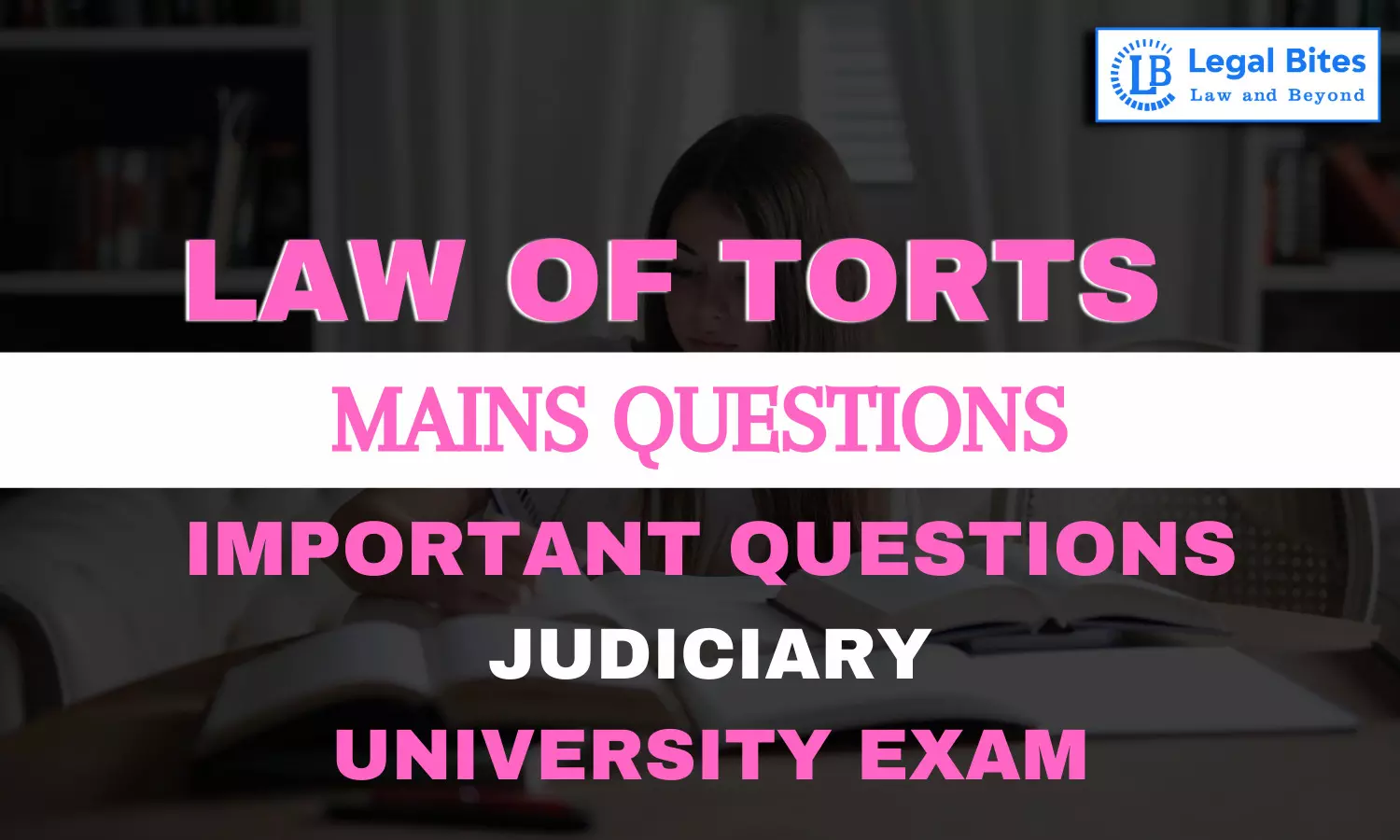What do you understand by the term "trespass to the person with reference to the law of torts"? What are its kinds? Discuss assault and battery.
Find the question and answer of Law of Torts only on Legal Bites.

Question: What do you understand by the term "trespass to the person with reference to the law of torts"? What are its kinds? Discuss assault and battery.Find the question and answer of Law of Torts only on Legal Bites. [What do you understand by the term "trespass to the person with reference to the law of torts"? What are its kinds? Discuss assault and battery.]AnswerTrespass to the person is a legal term used in tort law to describe a violation of an individual's personal rights or...
Question: What do you understand by the term "trespass to the person with reference to the law of torts"? What are its kinds? Discuss assault and battery.
Find the question and answer of Law of Torts only on Legal Bites. [What do you understand by the term "trespass to the person with reference to the law of torts"? What are its kinds? Discuss assault and battery.]
Answer
Trespass to the person is a legal term used in tort law to describe a violation of an individual's personal rights or physical integrity. It occurs when one person intentionally interferes with another person's body or personal space without their consent.
There are three types of trespass to the person:
Assault: An assault occurs when a person intentionally causes another person to fear that they will be subject to physical harm or offensive contact. It is not necessary for actual physical contact to occur for an assault to take place.
Battery: Battery occurs when a person intentionally and unlawfully touches another person in a harmful or offensive manner, without their consent. The touching can be direct or indirect, such as hitting someone with an object.
False imprisonment: False imprisonment occurs when a person intentionally restricts or confines another person's freedom of movement without their consent or without lawful justification.
All three types of trespass to the person require intentional conduct by the defendant. The defendant must have intended to commit the act that violated the plaintiff's rights. Additionally, the plaintiff must not have consented to the defendant's conduct.
Examples of trespass to the person include a person punching someone else without their consent (battery), a store security guard detaining a customer without lawful justification (false imprisonment), or a person threatening to harm someone if they do not comply with their demands (assault).
If the plaintiff can prove that the defendant committed trespass to the person, they may be entitled to damages for any harm caused, such as compensatory damages for any injuries suffered and punitive damages, which are intended to punish the defendant for their wrongful conduct.
Trespass to the person in tort law refers to intentional interference with an individual's personal rights or physical integrity. It includes assault, battery, and false imprisonment, and requires intentional conduct by the defendant and lack of consent by the plaintiff.
Assault and Battery:
Assault and battery are two distinct legal concepts that are often discussed together because they frequently occur together in criminal cases.
Assault refers to an intentional act that causes another person to fear or apprehend imminent harm. It involves creating a reasonable belief in the victim's mind that they are about to be physically harmed. For example, if someone raises their fist at another person and makes a verbal threat, it can be considered an assault.
Battery, on the other hand, involves the intentional touching or striking of another person in a harmful or offensive manner, without their consent. Unlike assault, battery involves actual physical contact. For example, if someone punches another person, it can be considered battery.
It's important to note that battery can also involve non-violent contact that is still considered harmful or offensive, such as unwanted sexual touching. The level of force used in a battery can also range from minor physical contact to severe physical harm, depending on the circumstances.
The key difference between assault and battery in tort law is the element of physical contact and harm. While assault can involve fear or apprehension of harm, battery requires actual physical contact that causes harm or offence. Both assault and battery can result in civil liability. The victim may be entitled to damages for any harm suffered, such as medical expenses, lost wages, pain and suffering, and emotional distress.
It's also worth noting that consent can be a defence to both assault and battery in tort law. If the victim consented to the contact or the act that caused the fear of harm, they might not have a valid claim. However, consent must be freely given, and the perpetrator cannot use coercion or fraud to obtain it.
Assault and Battery in tort law are two distinct causes of action that allow individuals to seek damages for the harm caused to them. Assault involves creating fear or apprehension of imminent harm, while battery involves intentional harmful or offensive physical contact. Both can result in civil liability, and the victim may be entitled to damages. Consent can be a defence in both cases, but it must be freely given.

Mayank Shekhar
Mayank is an alumnus of the prestigious Faculty of Law, Delhi University. Under his leadership, Legal Bites has been researching and developing resources through blogging, educational resources, competitions, and seminars.
